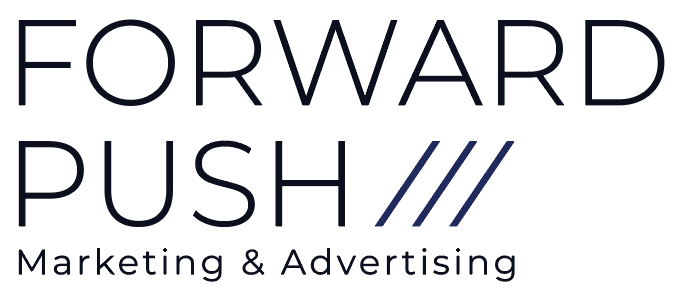What You Can Do to See Results
Effectively marketing your small business on social media requires more than a few accounts and some content. You need to consider who you’re targeting, as well as the unique characteristics of each platform. Once you’ve determined those factors, you can create a strategy that will begin to bring the results you’re looking for.
Start with Your Persona
Every small business needs at least one persona, if not more. A persona is your target customer, including their occupation, income, marital status, family structure, and likes and dislikes. This information will help you determine the best social media platforms.
In order to create your persona, consider your ideal customer. This could be one of your regulars, or a future ideal that you want to begin targeting. Include all the information above to the best of your ability, and keep this document in front of you while deciding where and what to post.
This renewed focus on who you want to reach will help you make the best decisions possible for your small business.

How to Choose Your Social Media Platforms
The biggest question we get from small businesses is choosing a platform. Owners want to know if they need to be on all of them, or if they don’t, how to choose the best options for them. We always take the position of quality over quantity, which means we would rather companies focus on two to three platforms well than five platforms poorly.
Choosing your platforms comes down to your audience. Every platform has their core demographic, and choosing right means engaging directly with your audience and growing your presence online. Do you primarily work with adults in their 50s looking for home improvement tips, or style-conscious millennials looking for ethical clothing?
- Facebook, while the platform with the widest range of ages, is ideal for those in their mid-30s and older.
- Instagram is for millennials, Gen Z-ers, and if you’re selling anything visual.
- Twitter is ideal for tech and journalism, and works well for tech products and services.
- Pinterest is great for home improvement, interior design, cooking, organizing, and even design and branding.
- LinkedIn is ideal for targeting business people with career-related products and services.
There’s no one-plan-fits-all answer for finding your small business’s ideal social media platforms. We typically find that Facebook and Instagram perform best, but we also encourage business owners to experiment to find what works best for them.

The Best Types of Content for Social Media
Depending on who you ask, the best types of content for social media could range from dog memes to scientific journal articles. There’s certainly room for all types of content on social media; just not all types from your business. In short, the best type of content to share is the content that your target audience wants to see.
This means some companies will share primarily educational articles for their niche, and others will head in a more humorous direction. Everyone has their niche and preference! There are, though, some guidelines we recommend for certain industries and types of companies.
Product-based companies should invest in product photography regularly so you always have fresh content to share. Interspersing with lifestyle stock photography makes your feed more engaging and less sales-driven while reducing the number of photos you need each month.
Service-based companies are challenging, but not impossible. Restaurants can share photos of their food and reshare posts from customers, and house cleaners or interior designers can share #housegoals and #hometips to provide value.
Facebook and Twitter are ideal platforms for sharing blog posts, which helps direct traffic to your website. If you can only produce limited blog posts each month, curate content from other blogs in your industry. Monitor which perform best to find and create the best content possible each month.

Customizing Your Content for Each Platform
Every social media platform publishes content in a different way. This is why we don’t recommend connecting an Instagram account to Facebook. Instagram posts require hashtags to improve organic reach, while hashtags on Facebook are, well, maybe still a thing? We digress. It may take a bit more time to post separately on Facebook and Instagram, but your content will be better received when the format fits the platform.
Another distinction is clickable links. To continue with our Facebook and Instagram example, Instagram only offers clickable links in your bio and in DMs. Everything else needs to be copied and pasted, which doesn’t work in the app. Services like Linktree and Lnk.bio resolve this issue by creating one link for a page with multiple links to your website.
Facebook, though, makes it easy to share articles. Instead of finding different content for each platform, though, repurpose the article. Share a blog post on Facebook with the link, then take an excerpt and share it as a micro-blog on Instagram. This provides value and similar messaging while utilizing each platform’s unique features.
Other platforms have their distinctions, too. If we consider Twitter, there is the character limit. Pinterest requires distinct photo and design sizing when posting. LinkedIn offers linking to articles and native video, similar to Facebook, but on LinkedIn hashtags appear to make an impact on discovery.
When considering what to share on each platform, remember that each one has its ideal content. Once you focus on that, you’ll begin to see your engagement and follower count increase. However, since social media has evolved so much over the last few years, growth can be slow. Which means it’s time to discuss paid advertising.

Paid Advertising on Social Media
Advertising on social media has evolved greatly over the last couple of years, and its accessibility for small companies is hard to beat. Part of this evolution is because organic reach has been impacted over time, making it difficult to reach new and returning customers without investing into ads.
The biggest player in this is Facebook, offering a variety of image and video ads on Facebook and Instagram. Other social media advertising options for small businesses include Pinterest, Twitter, and LinkedIn, though these are best for certain niches.
As we discussed above, you want to make sure you’re marketing to where your audience is. If your audience isn’t on LinkedIn, then don’t run ads there. We recommend that our clients start a paid advertising campaign on Facebook and Instagram, due to the sheer number of users and array of interests they can target.
You may be thinking, “Great, I’m convinced. But how much do I have to spend?” The answer really depends on your type of business and the competition. We have accounts that spend a few hundred dollars using Facebook and Instagram, while others spend thousands for Google Ads.
You’ll want to test out different images and copy, and make sure you track your progress to see how it’s impacting sales.
This can be done a number of ways, but we recommend driving traffic to a landing page and offering a deal to entice users to make their first purchase. The number of deals redeemed is the number of acquisitions you’ve made through the campaign.
Running Facebook and Instagram campaigns is a much larger topic than what we can cover here, but we wanted to include it because of its impact on small businesses and their marketing.
When creating your social media strategy, it’s important to remember that this is an ongoing process that needs a long-term view. But when you’ve chosen your platform and content well while supplementing with paid advertising, you can begin to use social media to your advantage to support continued business growth.
You Don’t Have to Do This Alone
If you’re looking to improve your social media and want to partner with a team committed to your success, give us call at (415) 640-8009 or send us a message. We would be honored to help your small businesses succeed.




